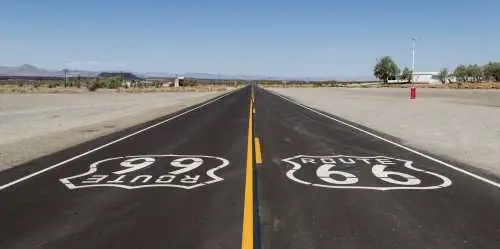Thursday 27th June 1985
After 59 years, the iconic Route 66 entered the realm of history when the American Association of State Highway and Transportation Officials decertified the road and voted to remove all its highway signs. Measuring some 2,200 miles, Route 66 stretched through eight states, from Chicago to Santa Monica, California. The idea of building a highway along this route surfaced in Oklahoma in the mid-1920’s as a way to link the state to cities like Chicago and Los Angeles. Highway Commissioner Cyrus S. Avery touted it as a way of diverting traffic from Kansas City, Missouri and Denver. In 1926, the highway earned its official designation as Route 66. The diagonal course of Route 66 linked hundreds of mostly rural communities to the cities along its route, allowing farmers to more easily transport grain and other types of produce for distribution. The highway was also a lifeline for the long-distance trucking industry, which by 1930 was competing with the railroad for dominance in the shipping market. Route 66 was the scene of a mass westward migration during the 1930’s, when more than 200,000 people travelled from the poverty-stricken Dust Bowl to California. John Steinbeck immortalized the highway, which he called the “Mother Road,” in his classic 1939 novel “The Grapes of Wrath.” Often called the “Main Street of America,” Route 66 became a pop culture mainstay over the years, inspiring its own song (written in 1947 by Bobby Troup) as well as a 1960’s TV series, and in 2006, the historic highway was featured prominently in the hit animated film “Cars”.






